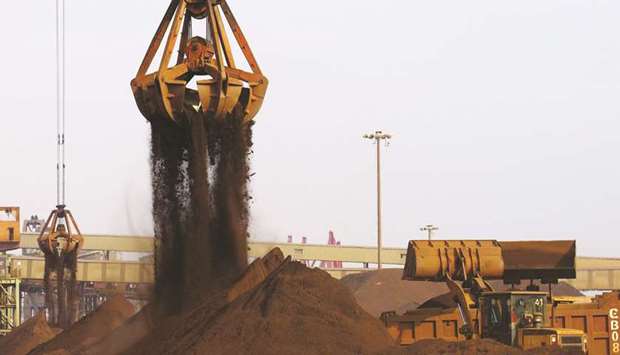“It might be a moderately better year next year than the market expects,” said Peter Harris, Sydney-based senior resources analyst at AMP Capital Investors, following visits to hold talks with steel producers and officials in China.
AMP Capital, which manages about A$165.4bn ($131bn) of funds, sees prices averaging above $60 a metric ton in 2018. That contrasts with forecasts from Australia, the top exporter, and Goldman Sachs Group who estimate prices averaging below $50 as supply growth overwhelms slower demand.
Steel demand in China will be supported by investment in roads to rail and a resilient housing market in smaller cities, according to AMP Capital, a unit of AMP.
Iron ore should defy forecasts of a sustained fall into the $40s or $50s range, Harris said. “You might see prices touch those levels, but over the course of the year, I’d have thought the price will be higher.”
Iron ore is forecast to average $51.25 a tonne in 2018, according to the median of 18 analysts’ estimates compiled by Bloomberg. AMP estimates an average of $64 in the first half, falling to $60 over the final six months. Ore with 62% content delivered to Qingdao fell 3.1% to $68.05 a dry tonne on Thursday, according to Metal Bulletin. SGX AsiaClear futures added 0.5% to $66.60 on Friday.
Iron ore touched above $70 a ton this week, after plunging into the low $50s as recently as mid-June, as China’s record steel output drives growth in imports. It has averaged $73.52 a ton so far this year, compared with an average of $58.38 a tonne in 2016 and $55.54 a tonne in 2015, Metal Bulletin data shows.
This year’s price gain is reflected in producers’ profits.
BHP Billiton’s underlying earnings are forecast to have surged to about $7.3bn in the year ended June 30 from $1.2bn in the previous 12 months, according to the average of analysts’ forecasts compiled by Bloomberg. Rio Tinto Group’s profits will rise to $7.7bn in 2017 from $5.1bn a year earlier, the data shows.
The average realized iron ore price received by BHP jumped 41% to $62 a wet ton in the six months to June 30, compared with the same period a year earlier, the producer said on Wednesday. Rio received an average of $62.40 a wet ton in the first half, 40% higher than a year earlier, according to filings.
Some industry leaders and officials in China expect steel output to remain strong in 2018, AMP Capital’s Harris said, citing meetings in the country in April. “The closer you got to Beijing the rosier 2018 was forecast to be,” he said in a Wednesday phone interview. “Some of the steel producers we spoke to actually expected stronger growth in 2018 than in 2017, I’d think it’s actually more likely to be stable-to-slightly down.”
Investment in rail, roads and urban centres, manufacturing growth and rising housing sales in smaller, third tier, cities are likely to continue to aid steel demand next year, according to Harris. Housing prices in third-tier cities rose in June, as the market cooled in top-tier cities, Bloomberg Intelligence said this month.
Steel output in China was 73.23mn tonnes in June, 5.7% more than a year earlier, according to data from the National Bureau of Statistics published this week. “More of the same sounds a bit boring, but more of the same levels of steel production, well that’s pretty good,” Harris said.

